Travel always begins by venturing just a little beyond your familiar surroundings and taking that first step out your own back door. For most Canadians in general, and Vancouverites in particular, that first step is only a few miles away at the nearest United States border crossing. Owing to its obsession with cars and roads, the best way to really appreciate a journey through modern day America, is by getting on the nearest interstate freeway, pointing your car in the direction you want to head, and start cruising. Built during the Cold War years, the interstate freeway system was originally designed as a means of rapidly moving troops anywhere in the country. While waiting for the Russian invasion that never occurred, it became the principal means of transport for both pleasure and commerce and a powerful force uniting the country.
Starting with the Chuckanut Drive, just outside the picturesque town of Fairhaven, this detour off the I-5 weaves through stunning ocean scenery, daffodil fields, and into the town of La Conner with its funky shops and restaurants. It's also the gateway to Anacortes and Whidbey Island. Unfortunately the forces of unfettered development, tract housing, strip malls, big box stores, franchisees, and all the other trappings of suburbia, spreading through the country like a disease, are ruining the character of small towns everywhere and creating a world of bland uniformity.
Because there is just so much natural beauty to try and take in, living on the West Coast with even a mild case of wanderlust ensures repeated journeys to favourite spots and side explorations to discover others. As times change so do tastes and perceptions and, what was once overlooked, can overnight become something of fascination and renewed interest. Seattle, Portland, and even San Francisco, are never far away from Vancouver and, between these cities, there's always something new to check out.
Seattle, the first big city one encounters, is almost identical to Vancouver in setting and climate but after that any similarity ends. Powered by the twin economic engines of Boeing and Microsoft, Seattle has made itself into an industrial and technical powerhouse. The wealth is perhaps most evident in a new baseball park, a well funded umbrella of arts organizations and universities, and the every expanding freeway system. The downtown area is a continuum of interesting restaurants and shops along the waterfront that starts at one end with the sports stadiums of the International District, moves through historic Pioneer Square and Pike Market, which surround the Central Business District, anchored by the Nordstrom & Macy's department stores, and finishes up with the area around the Space Needle and Belltown.
Over the years we have spent many fascinating weekends exploring the local sights and sounds, making new discoveries and re-visiting old favourites, going to sports events and concerts, and all the while marvelling at the differences between the two cities. The lively dinner jazz scene at Triple Door and Jazz Alley, the architectural marvels like the Space Needle, Library, and the Smith Tower, and the fabulous museums including the Museum of Pop Culture and the incredible Museum of Flight.


Seattle is also a perfect launching spot for exploring the scenic Olympic Peninsula but first a pit-stop in Tacoma, just on the outskirts, with its Museum of Glass featuring, of course, the art of the famous local Dale Chihuly, and right next to it the LeMay Car Museum with its hundreds of beautifully restored classic automobiles.
But the real action is on the coast starting at the colourful, quirky town of Long Beach. Here the wind, rain and open ocean make for fabulous storm watching as you wander over miles of sandy beach and grassy dunes filled with interesting displays. After a day of getting soaked, you can then warm up with some great food and drink and watch the action from the comfort of the hotel.



From here you can hop over the Columbia River bridge to Astoria in Oregon and the continuation of Hwy 101 south or you can follow the road as it winds in and out of the forest and back onto the coastline as it makes its way up north to Ocean Shores.
Leaving the ocean behind and heading into the rain forest we arrived at the stunning Lake Quinault Lodge situated in the Olympic National Park. Reflecting the spirit of a bygone era, this cozy retreat with its massive fireplace lounge and comfortable rooms welcomes you into its warm embrace the minute you set foot on the grounds. Surrounded by untouched forest and miles of well marked trails you are free to explore the beauty of everything a rain forest offers including some of the largest spruce and cedar trees in existence.


Leaving behind the rain forest we then headed back to the coast for more unspoiled windswept beaches and big ocean waves to check out before spending the night in the stunning lodge at Kalaloch.
From Kalaloch it's only short drive to the westernmost point of the Olympic Peninsula at Neah Bay or the town of Port Angeles where, at either spot, you can see across Juan De Fuca Strait to Vancouver Island. Just outside Port Angeles you can drive up the Olympic Mountains to check out the famous Hurricane Ridge where the winds are always blowing but also offering amazing views and wildlife watching.
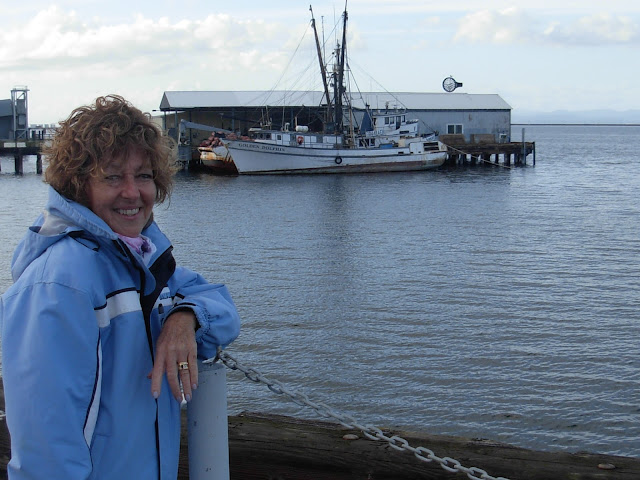
From Port Angeles it's only a short drive to Port Townsend, another historical town with some interesting local sights, shops and restaurants, and the ferry terminus to Whidbey Island for the return home.
Another way to see America is by riding the rails of the delightful Amtrak train system, a mode of transport becoming increasingly popular as the roadways get more congested and the airports struggle with security concerns. Whether it is just for a weekend getaway in Seattle or through to Portland Oregon for the annual jazz festival, the train offers a comfortable, stress free alternative to the automobile and even comes with food & beverage service. Historic train stations have been restored and there is now twice daily service being offered from Vancouver.
A bridge over the Columbia River leads into Portland where the suburban sprawl from Seattle ends and a completely different mindset takes over. Here the city has made its renovated heritage buildings come alive with modern hotels, shops, restaurants, bars, and a vibrant downtown nightlife.
A friendly and delightful mid-size city that has integrated its parks and public spaces to encourage walking, it also has a restored trolley car system as part of the transit system. Famous for its rose festival, jazz festival, and the incredible Powell Books store, Portland has its own sophisticated edge that includes wonderfully accessible public art on display everywhere.
Best of all is Portland's reputation as the largest cottage micro-brew industry on the west coast. Boasting more than 100 different brands that are available for sampling at the seemingly innumerable pubs and pizza places throughout the city, it would take a lifetime to get through them all.

Unless you are coming down the coast from Astoria, the road from Portland comes out at windy Lincoln City. Here the kites are always flying and the relentless surf pounds against the beach in a spectacular display of power. It's not all just sandy beaches either, as there are plenty of interesting rock formations to admire, in between trying to catch a glimpse of the migrating grey and humpback whales off in the distance.
The town of Newport offers shelter from the ocean, a good selection of seafood restaurants, and entertaining sea lions that like to mug for the tourists when they aren't gorging on seafood themselves.
But Newport is not even half way down the coastline and it would be another day of taking one's time to enjoy the stunning scenery and photo opportunities as the highway winds its way along the coastline to the town of Eureka just across the California border.
After resting up in Eureka it was time to say farewell to the coastline for awhile and head inland towards wine country but not before having an opportunity to check out some of the truly impressive remaining members of the giant Redwood Forest.
Coming out of the Redwood Forest one is greeted by the warm and gently undulating hills and valleys of sensuous, rich farmland that is interspersed with cow grazing pastures and vast vineyards. The surrounding valleys of Sonoma and Napa, their roadways lined and shaded by fragrant Eucalyptus trees, guide your approach to a land dotted with hundreds of wineries.
The charming town of Healdsburg, located in the centre of the Sonoma Valley and the Russian River, with its many motels, shops, and restaurants, is perfectly situated as a base for exploring and tasting and it's impossible to resist the invitation to take in a day or two of picnics and relaxation before moving on.
Set in a stunning location overlooking the Pacific Ocean, the famous cable car system criss-crosses its steep streets, vibrant ethnic neighbourhoods serve up colourful, delicious food, and the waterfront area is alive with shops and tourists year round. In spite of earthquakes, much of the turn of the century architecture has been preserved, as has the lighter, nostalgic memories of North Beach, Haight-Ashbury, Chinatown, Castro and even Alcatraz.

Alcatraz Island is located 1.25 miles offshore from San Francisco originally developed as a lighthouse and military fortification and then became a federal prison from 1934-1963. Designed to hold prisoners who continuously caused problems at other prisons some of the most famous criminals in American history stayed there including Al Capone, Robert Stroud (the "Birdman" of Alcatraz), and George "Machine Gun" Kelly. Officially no prisoners ever successfully escaped from Alcatraz but, on the night of June 12th, 1962 three men (the Anglin brothers, John & Clarence, and Frank Lee Morris) carried out an elaborate escape and were never caught. Closed as a prison in 1963 because of high maintenance costs, it is now open to tourists.
Alcatraz had its own special attraction for me when I joined a few hundred others to swim from Alcatraz Island to the mainland on the anniversary date of the fellows who allegedly managed to escape. After a bit of an expedition getting there by cable car, foot, and ferry we jumped into the frigid waters and swam back to the Aquatic Park an exhilarating 36 minutes later.

After the swim there was plenty of time to do more sightseeing and revisit favourite places. A city with an inexhaustible supply of attractions, it's no wonder it's everyone's favourite west coast destination starting of course with the wonderfully touristy Fisherman's Wharf. Some things never change, like the wind and fog, but it doesn't keep the tourists away and it certainly doesn't affect the resident sea lions.
Then there is historical Chinatown, the most densely populated area in America west of Manhattan, with all its colourful shops, decorations and countless restaurants to choose from.
The old beatnik neighbourhood of North Beach is a great place to find an Italian style meal and of course the City Lights bookstore still stands next to Vesuvio's Cafe where the ghosts of Ginsberg, Kerouac, Burroughts and others hang out.
Like Seattle, the construction of a new ballpark, with an old fashioned design, in the heart of a derelict area, has led to a major urban renewal project which promises to bring in even more human scale activity in the coming years.
There's always something to see and do in the "City By The Bay" with its interesting architecture, rich cultural history, and fascinating people scene that populates the various quirky and unique neighbourhoods.
A little further on after driving around Monterey Bay one arrives at Monterey itself, a former seafood canning town whose characters and history shaped the novels of John Steinbeck and is now a tourist destination in its own right.
The stunning aquarium is reason enough to visit this charming town, with its massive floor to ceiling, 2 storeys high, glass enclosure that replicates the kelp forests found just outside, and is filled with colourful fish, including a magnificent wolf eel.
Outside the Aquarium is a well known scuba diving site where the kelp forests are home to the impossibly cute sea otters rafted together and happy to pose for pictures.
Sea lions are also an ubiquitous sight as they bark and ham it up all day long around Fisherman's Wharf. The cannery business may have peaked years ago but the area still has plenty of fish.
And fish is what keeps Fisherman's Wharf probably the most popular place of all with its incredible selection of seafood restaurants, not to mention souvenir shops and whale watching boats.
It's also easy to get away from all the tourists and just go for a long walk along the windswept beaches while marvelling at the powerful waves that continue to shape the coastline.


The interesting rock formations also provide a playground of sorts for the sure footed, not to mention haul outs for the seals and rookeries for the birds.
Journey around the corner from Monterey the rough rock formations and windswept beaches and forests continue until they merge with a collection of famous golf course, including the strangely named, Pebble Beach. The roadway then comes to the stunning beach of Carmel-by-the-Sea, an exclusive, and very pretty, village somewhat tucked away from everywhere and home to the rich and famous.
The town itself is filled with boutiques, galleries, and restaurants befitting an upscale community but not very practical for the day to day living needs of everyone else, which is perhaps the intent all along.
Continuing to follow either Hwy 101 or the coastal route will bring you to the beaches of quiet Santa Barbara, a town on the outskirts of Los Angeles that quickly turns into a maze of 12 lane freeways as you make your way into the heart of a city that continues to set the standard for unchecked suburban sprawl.
Stretching for 100 miles in any direction with monster interchanges at key intersections, Los Angeles is the antithesis of New York and the East Coast. With its hundreds of miles of beaches, warm weather, Disneyland, Hollywood, freeways to everywhere, and laid back emphasis on living the good life, it has become its own fantasy world and exists in splendid isolation from the rest of the country.
With very little of a discernable downtown, there isn't much to see and do unless you're into children's tourist attractions or know someone who lives there. Giant shopping malls filled with chain stores, movie complexes and fast food outlets dominate most of the landscape that, at one time, were all fruit orchards, with the only thing distinquishing one area from another being the quality of the neighbourhoods.
But there are beaches, and of all the beaches none is more popular or colourful than Venice Beach. Filled with folks strutting their stuff in outdoor gyms, street art performances, or just walking by, everyone is putting on a show of some kind including those doing the watching.
Like the famous Hollywood sign on the hillside, the reality is about as far removed from the glitz and glamour as are the exclusive enclaves of the super rich. High above the eye burning air pollution of the low lying ghettos of asphalt and broken glass, where the poor blacks and largely illegal Mexican immigrants struggle to survive, the movie stars and wealthy elite live in a Beverly Hills/Rodeo Drive world surrounded by swimming pools and lush foliage, with nothing to do but go shopping and complain about the servants.
In spite of the reality of a crowded, out of control city that lives way beyond its means, the myth persists of an earlier era when life was simpler and people came from all parts of the country to enjoy the sun, fun, and surf. Even now the image of the ubiquitous surfer in search of the perfect wave is what everyone equates with California and, at the pier at Huntingdon Beach, time indeed seems to be standing still.
Eventually though one arrives at the charming little town of Hood River, located on the Columbia River in the shadow of Mt. Hood. Here the microbrewery and pizza culture of downstream Portland is very much alive and doing well.
Climbing back out of Hood River with its pleasant green farms nestled along the mighty Columbia River, we were soon back on Hwy 97, enroute to Yakima and the I-90 through the Snoqualmie Pass back into Seattle.
The town of Snoqualmie was made famous with the Twin Peaks TV show but it still serves good pie and offers beautiful scenery.








































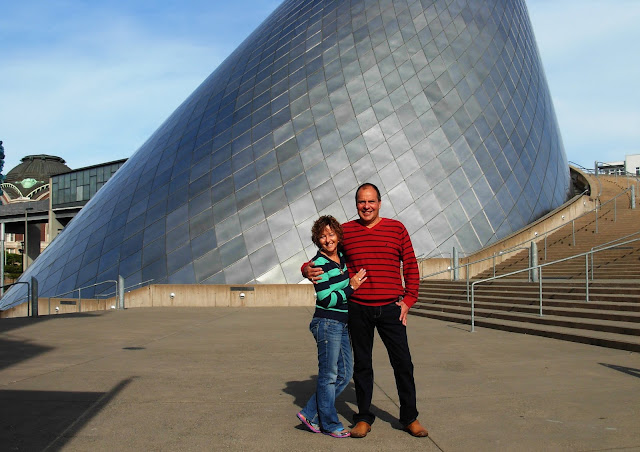













































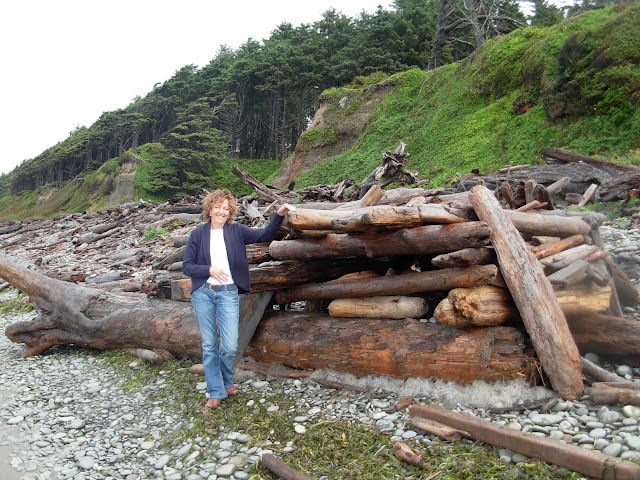

























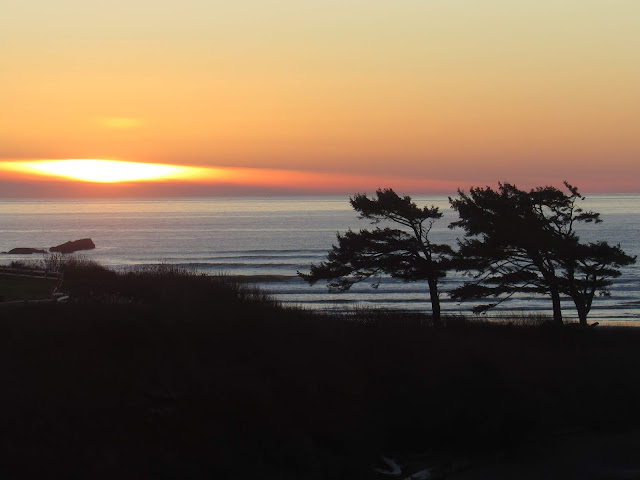













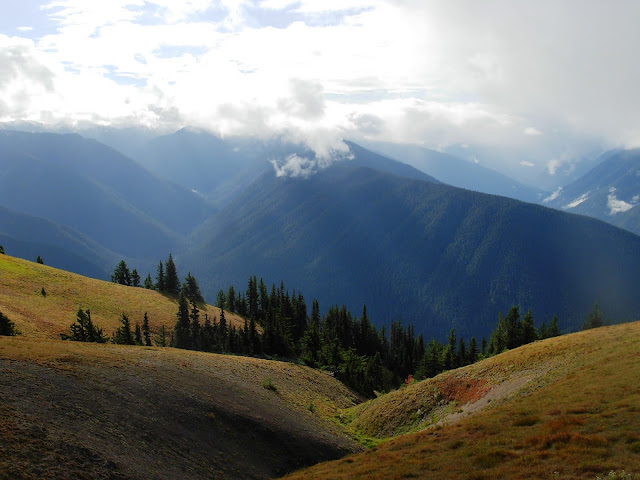


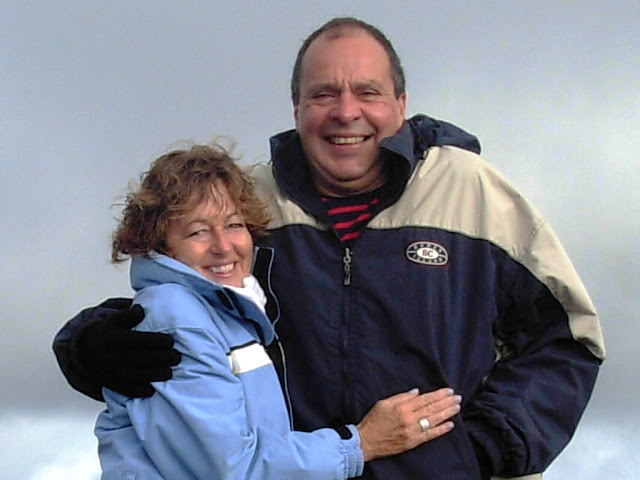





























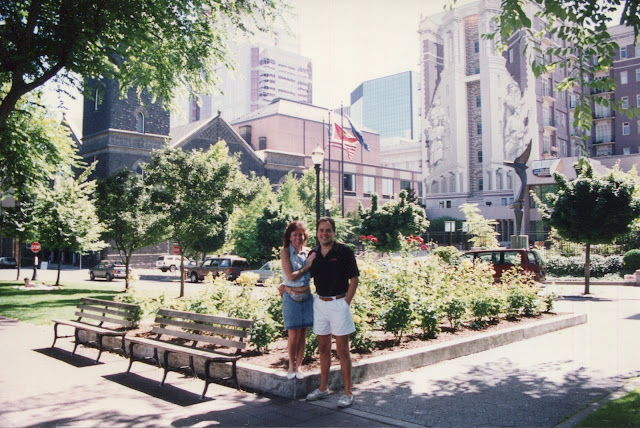












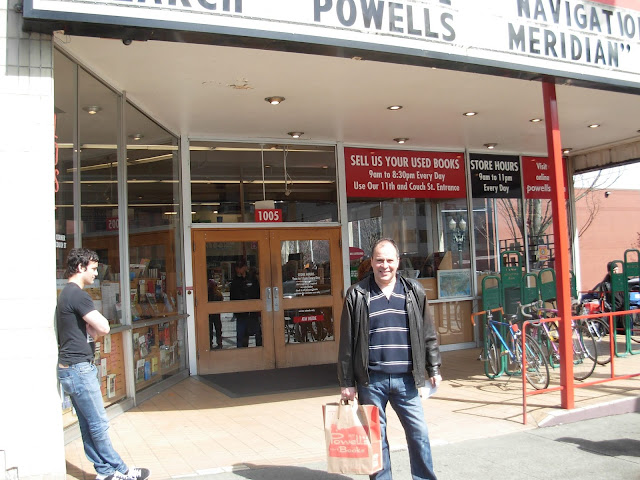


























































































































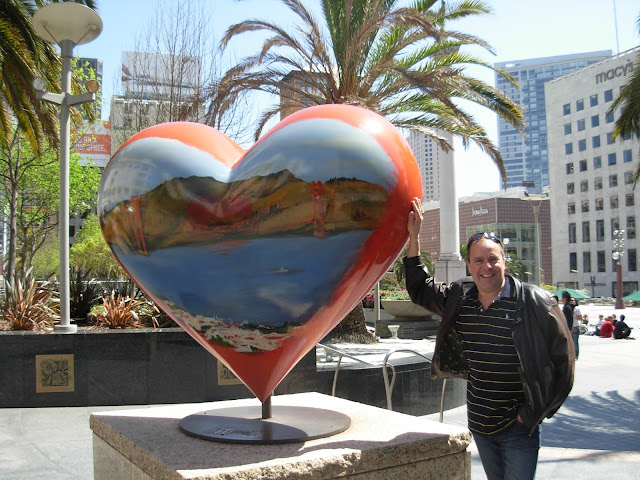


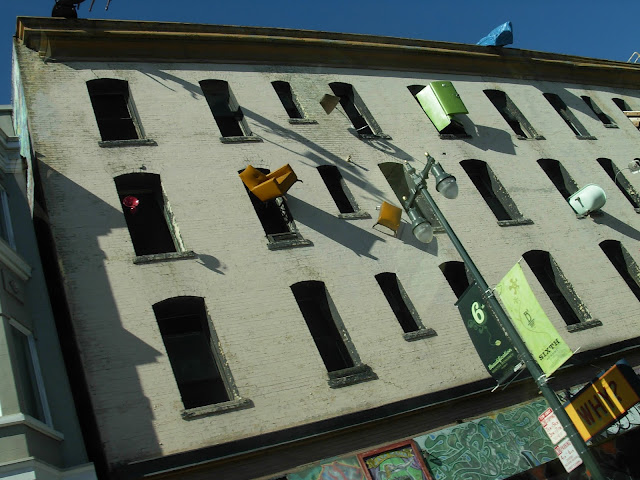








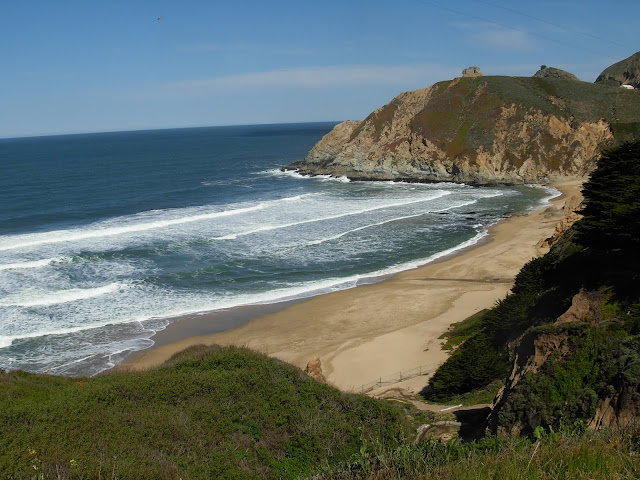








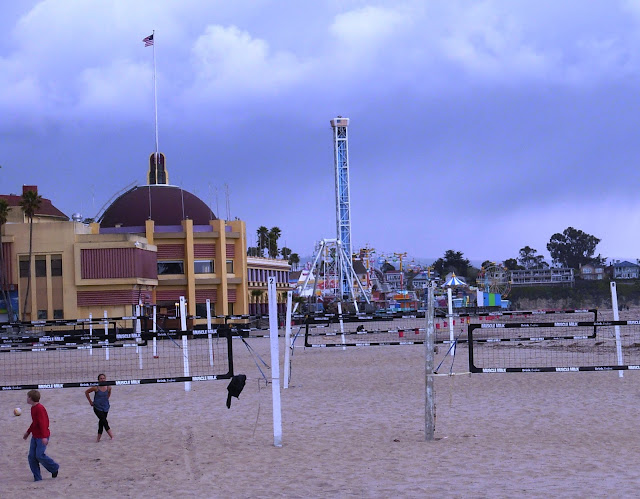




























































































No comments:
Post a Comment